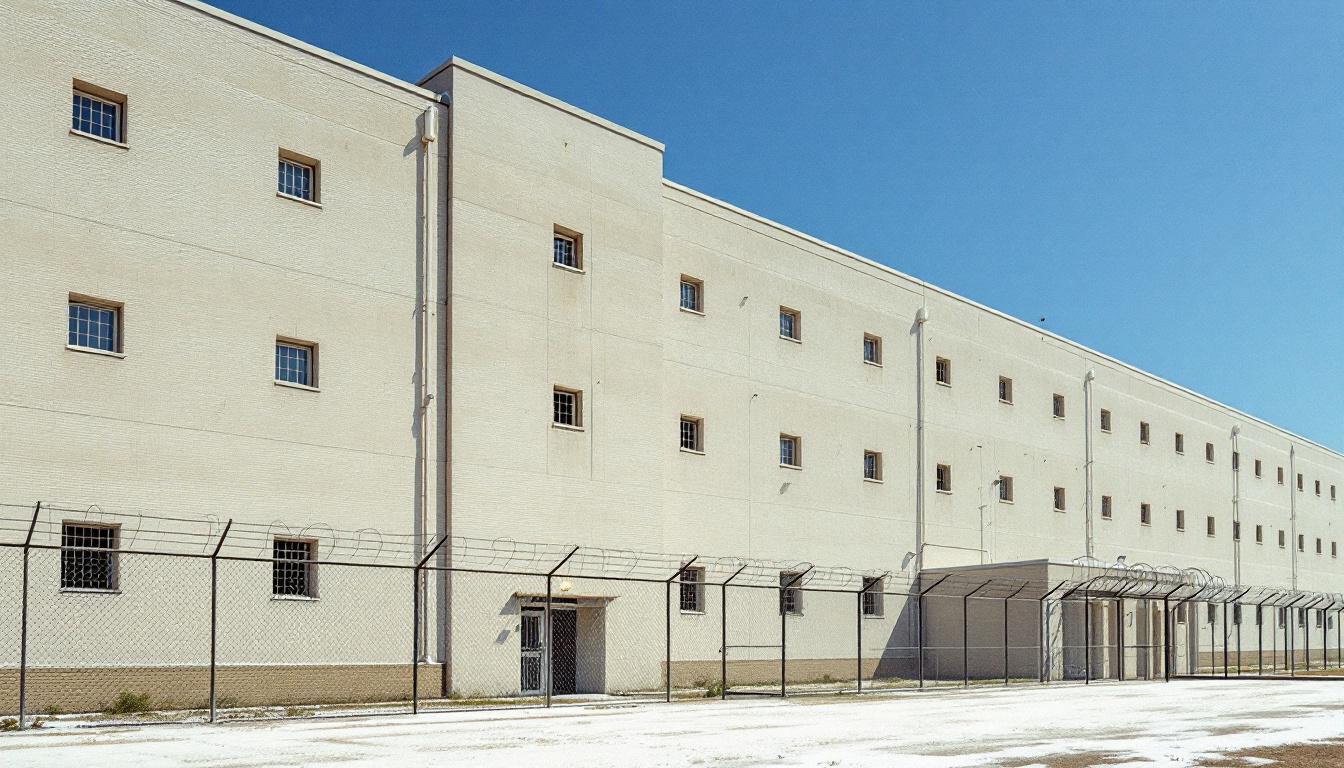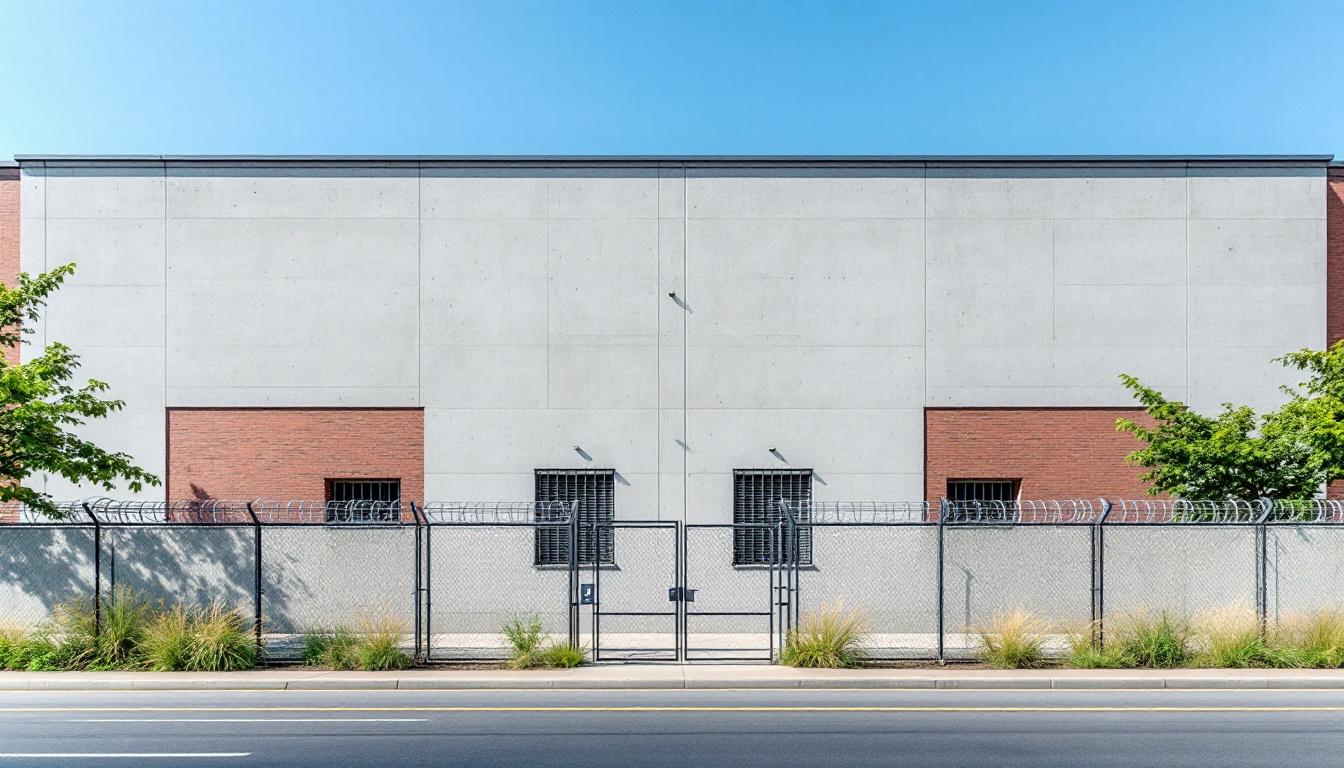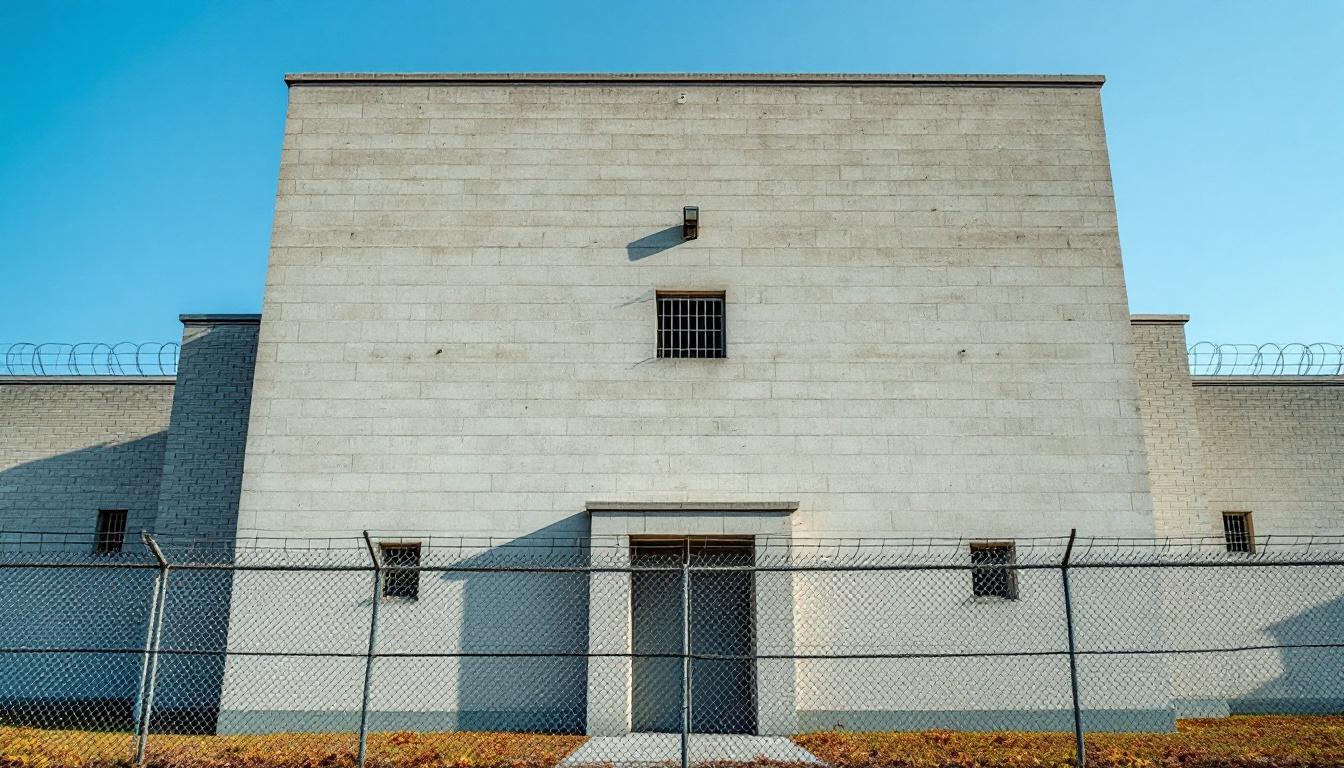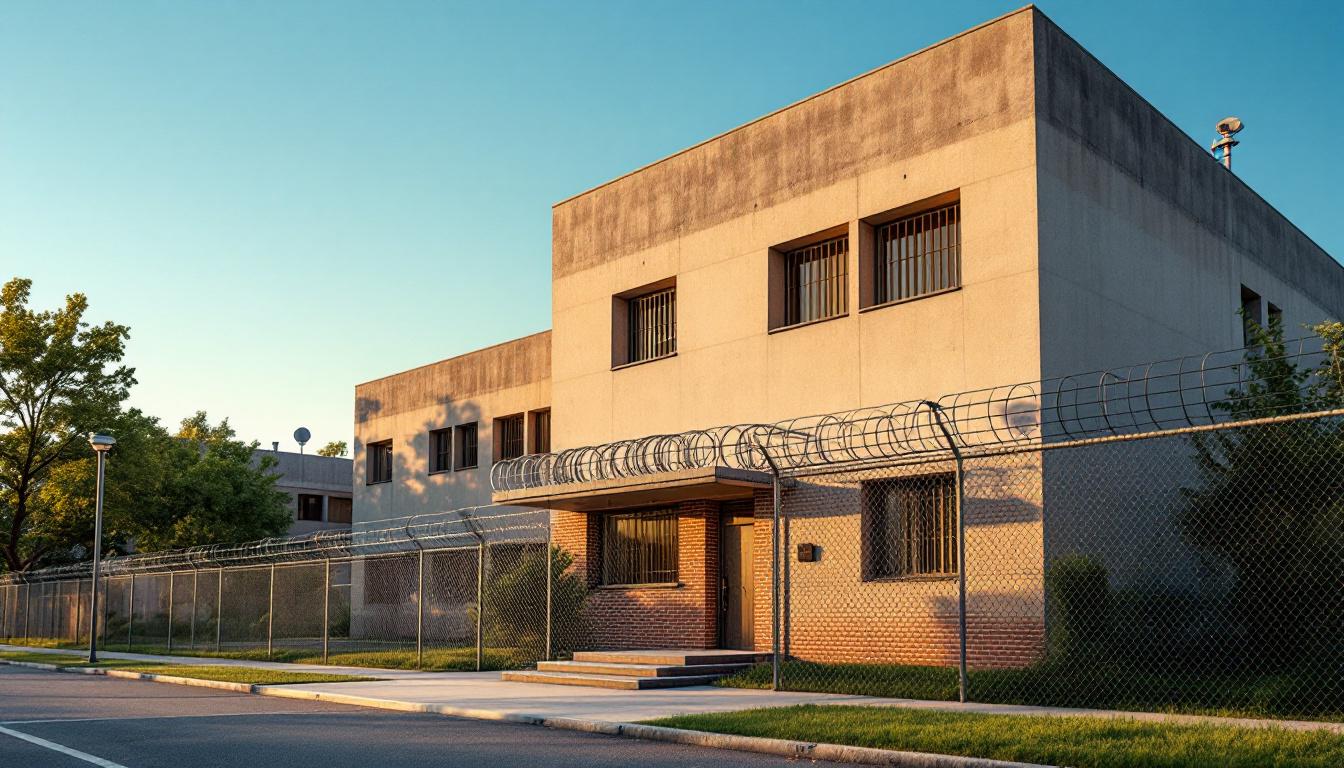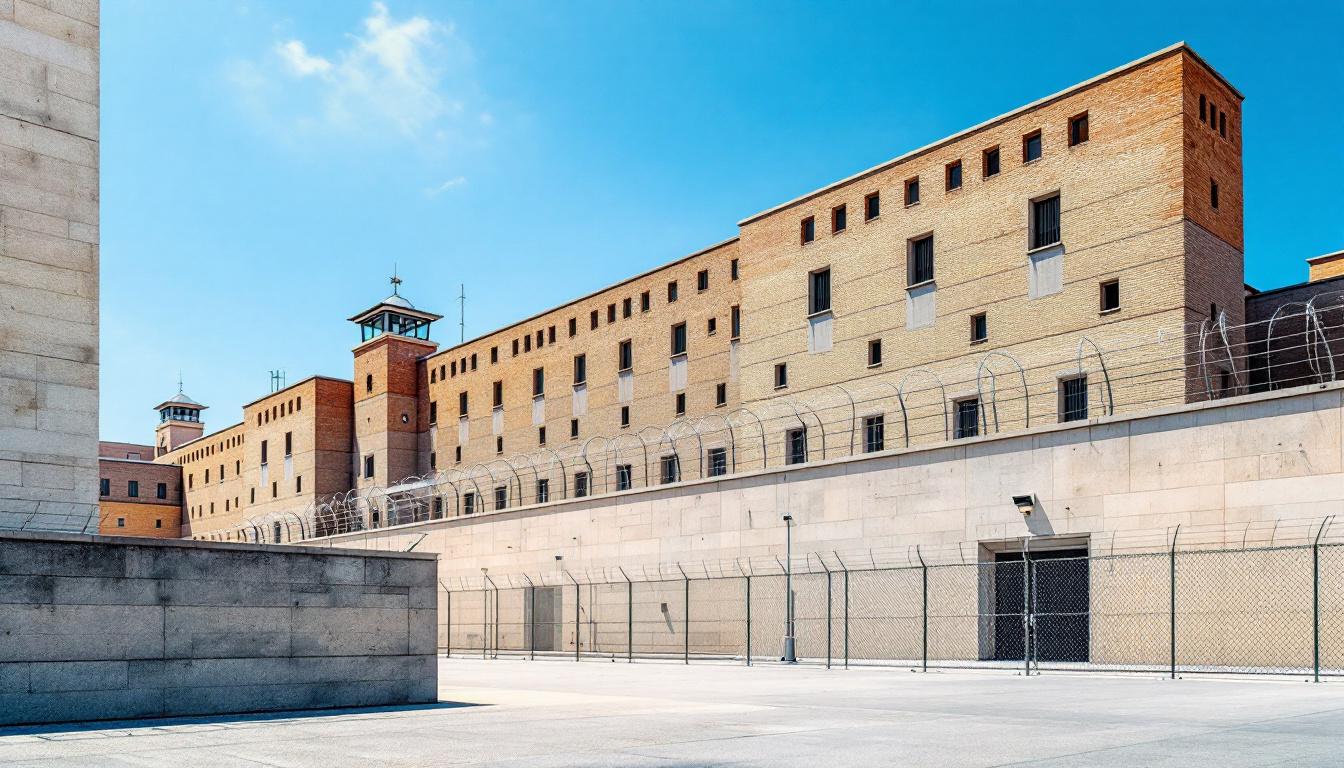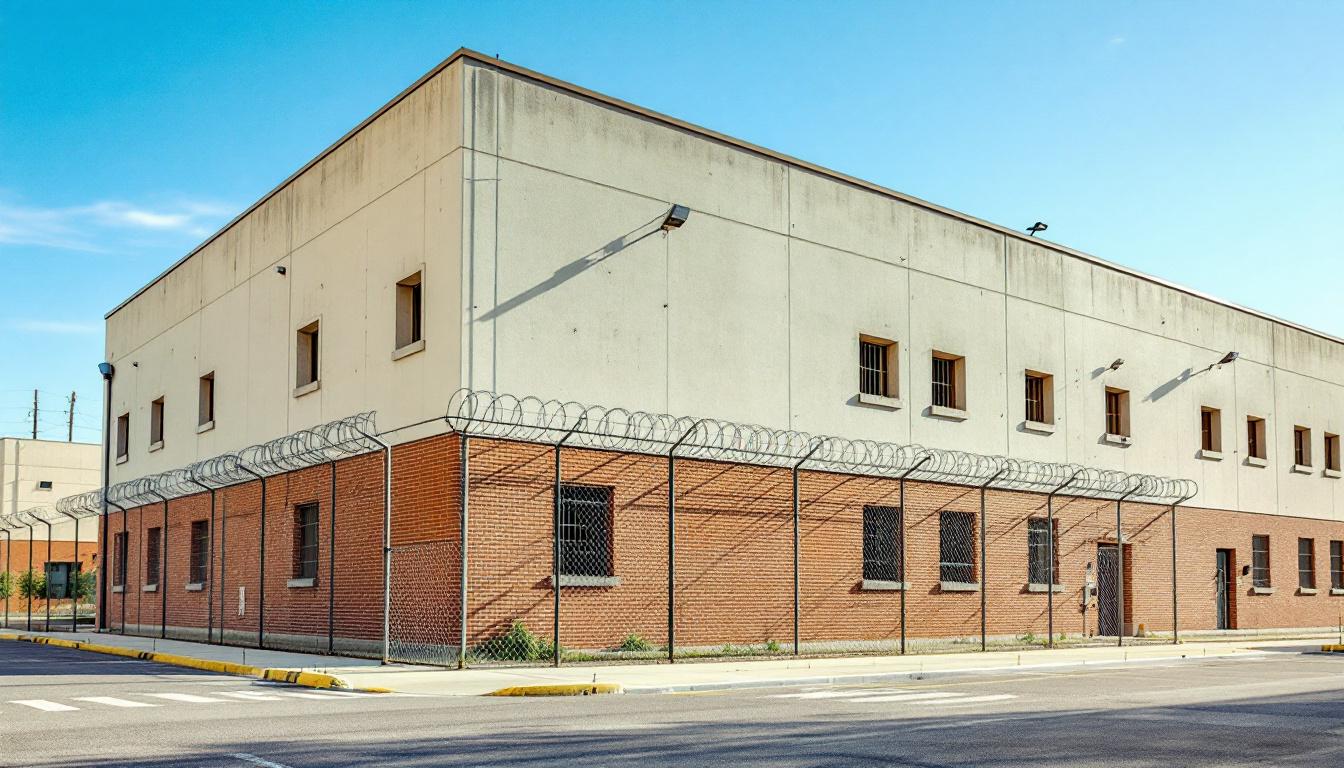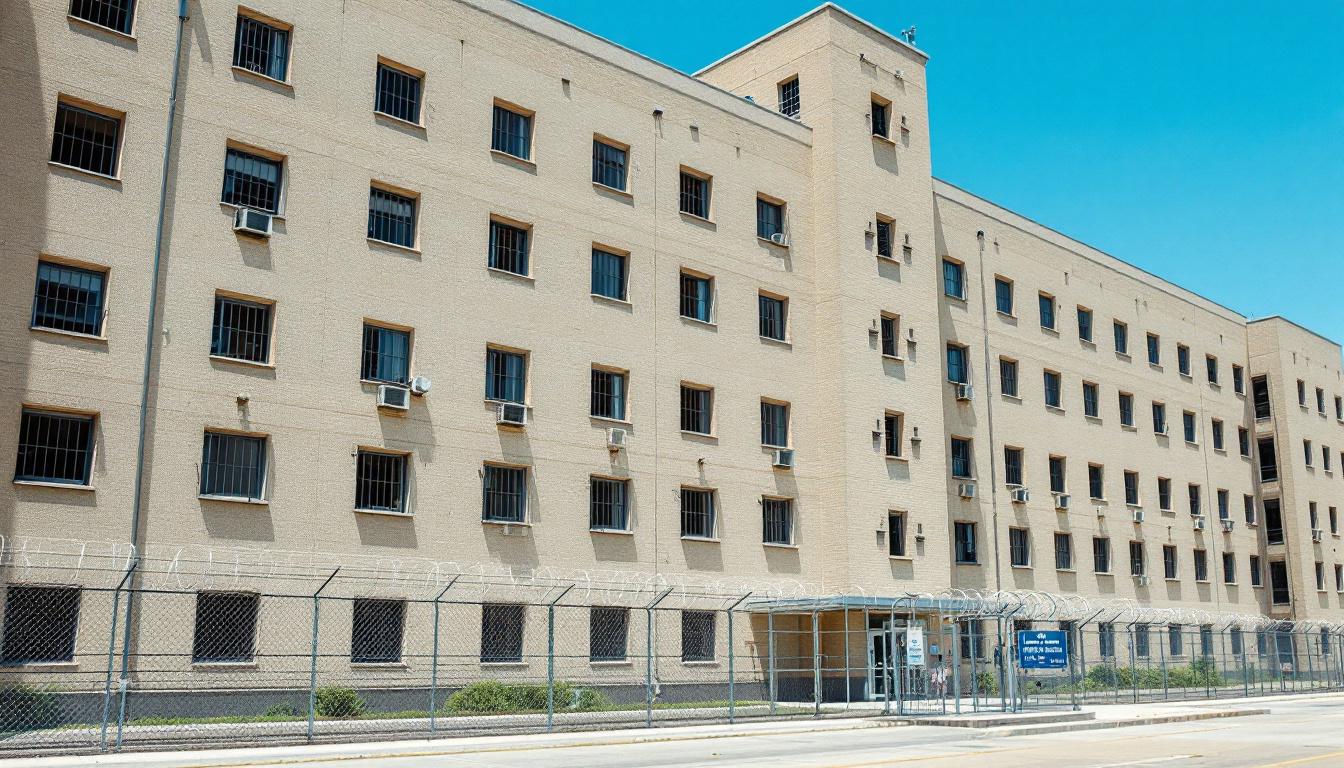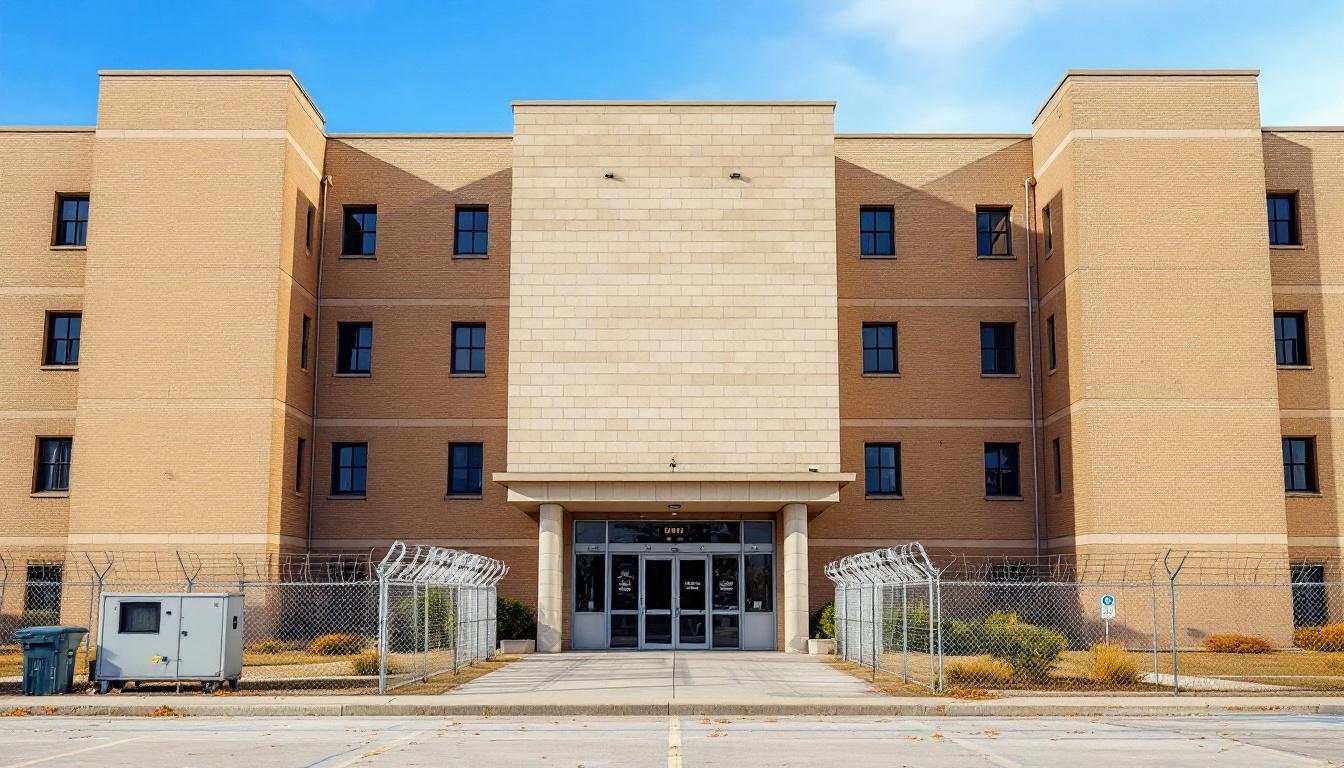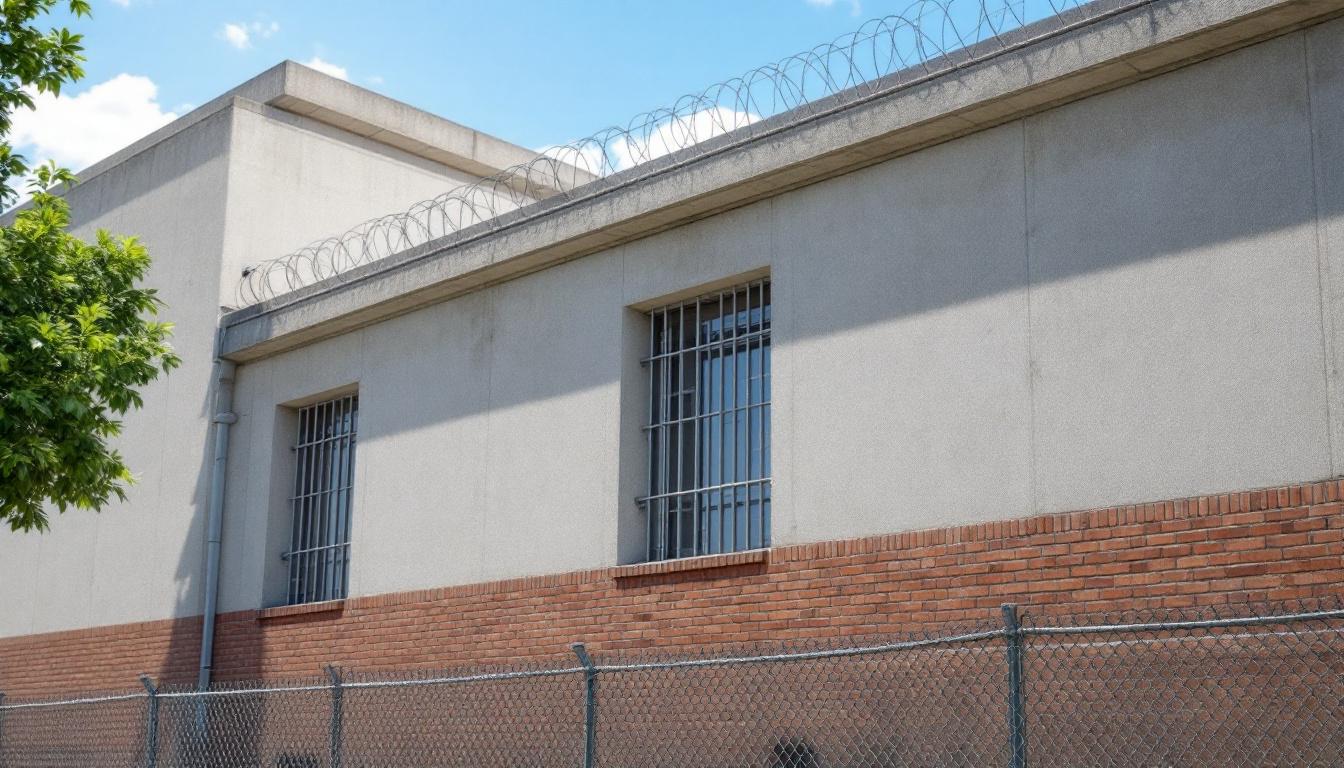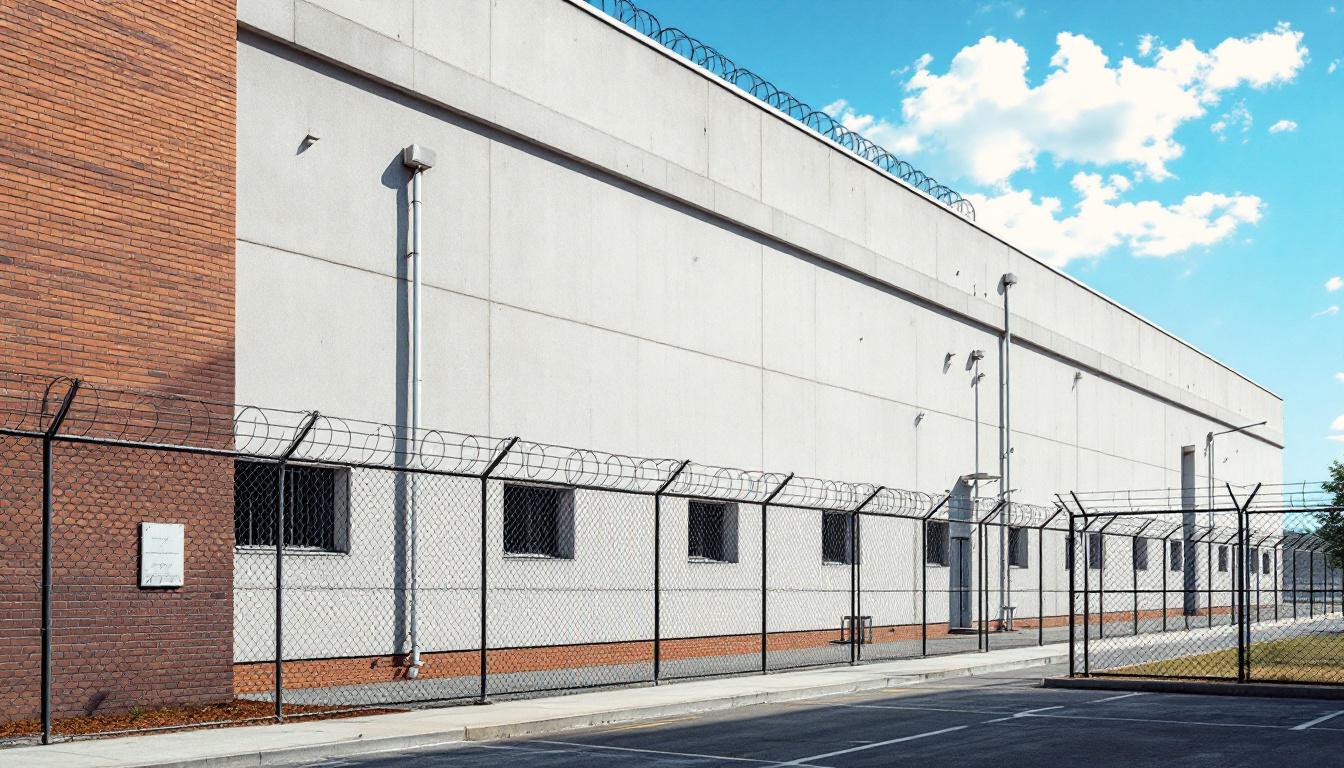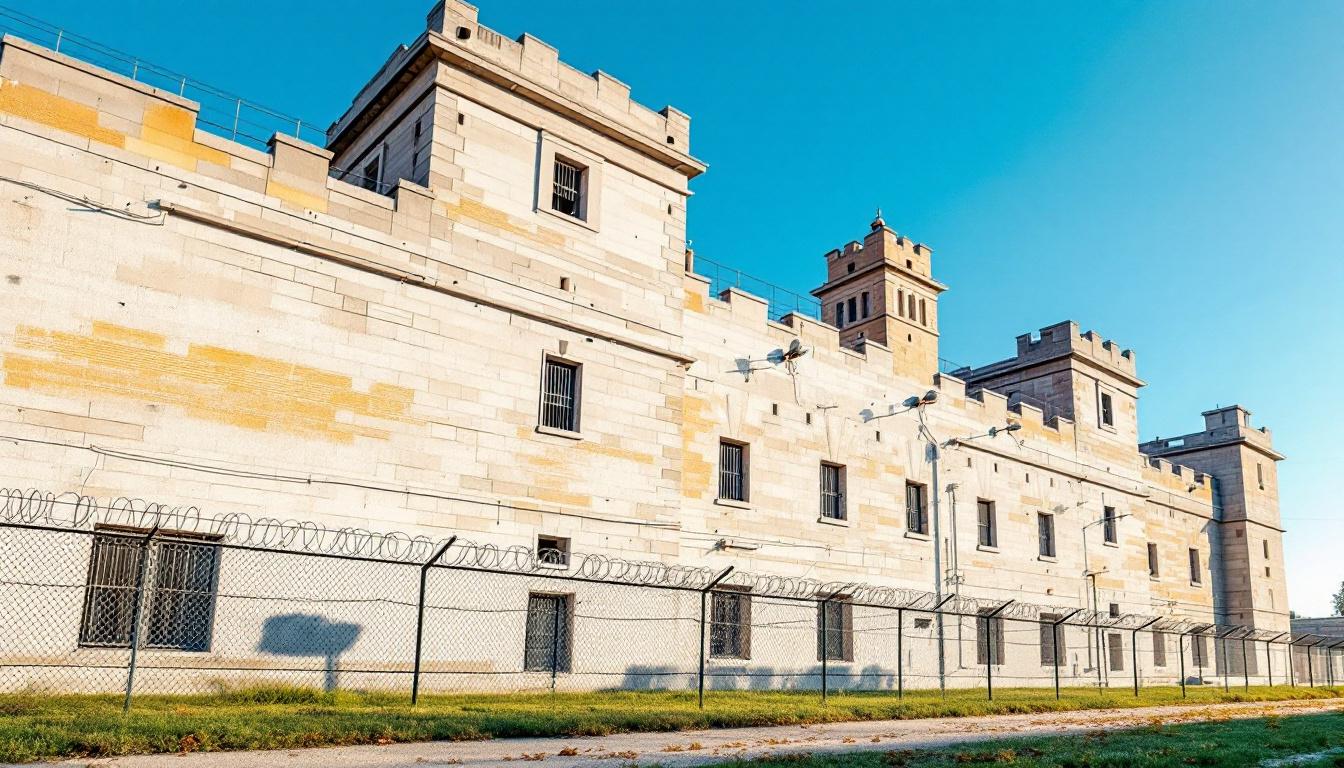
Quick Navigation
How to contact an inmate at Federal Correctional Institution, Terminal Island
This comprehensive guide will walk you through how to connect with an inmate at Federal Correctional Institution, Terminal Island. Follow the steps below to find an inmate and send letters and photos:
- Search for the inmate using our search tool below
- Create your account or log in to Penmate
- Write your message (up to 6,000 characters)
- Send instantly - inmates receive printed copies daily
Find an Inmate
Search for an inmate to start communicating today
Tip: You can search by first name, last name, or inmate ID number
To contact a person at Federal Correctional Institution, Terminal Island start by searching for the person on the official facility website. Perform a search by following these steps:
- Step 1: Enter their first name and last name into the search form and click "Search"
- Step 2: Locate their inmate record
- Step 3: Write down their Inmate ID and any housing information provided
Important! Be sure to enter the person's full name. Nicknames should not be used.
How to Send Messages to Inmates

You can use your phone or computer to send emails, letters, and photos to an inmate. Messages are sent electronically to inmate tablets or kiosks at the facility. If you would like to send a message, start by searching for an inmate at Federal Correctional Institution, Terminal Island.
Sending Photos and Postcards

A great way to send love and support to a loved one at Federal Correctional Institution, Terminal Island is to send photos and postcards. It only takes a few minutes to send photos from your phone and it makes a huge difference. You can also mail postcards with words of support and inspiration, or design your own postcard for special moments like birthdays and holidays.
Important! Be sure not to send any explicit photos or they may not be approved by the facility. You can also use a photo printing app like Penmate to make sure your photos are printed at the correct size (4x6 or 3x5) and are mailed according to the rules and regulations of Federal Correctional Institution, Terminal Island.
Frequently asked questions about Federal Correctional Institution, Terminal Island
-
How long does it take to deliver a message?
If you're sending an email message your letter is usually delivered within 24-48 hours. For messages sent via mail you should expect delivery within 3-7 days. All messages will need be approved by Federal Correctional Institution, Terminal Island.
-
How much does it cost to send a message to Federal Correctional Institution, Terminal Island?
You can send a message free using your phone or mail a message via USPS for the price of a $0.60 stamp and envelope. You can also purchase credits or e-stamps from services starting at $1.99.
-
What services can I use to contact an inmate at Federal Correctional Institution, Terminal Island?
Penmate
You can use Penmate to send letters and photos to an inmate from your phone. It's an easy way to stay in touch during your loved one's incarceration. Use the inmate locator to find an inmate's location and contact information, then you can send messages within a few minutes.
Securus messaging
Securus may be another option for communicating with an inmate at Federal Correctional Institution, Terminal Island. You can create a friends and family account and purchase credits to send messages. All messages will be reviewed and must be approved by the facility.
JPay
Some county jails and state prisons may support sending messages with JPay. You must register an account with the system, find your loved one, and purchase stamps to send messages. For some locations you can also attach photos.
Smart Jail Mail
You may also check if Smart Jail Mail is available at Federal Correctional Institution, Terminal Island. Smart Jail Mail is operated by Smart Communications and has contracted with some state and county jails. After purchasing credits, your messages and photos are sent to the facility, printed out, and then handed out to your loved one.
-
What is the mailing address of Federal Correctional Institution, Terminal Island?
Mailing address:
Federal Correctional Institution, Terminal Island
1299 S Seaside Ave
Los Angeles, CA 90731
Phone: (310) 831-8961Business hours:
- Monday: Open 24 hours
- Tuesday: Open 24 hours
- Wednesday: Open 24 hours
- Thursday: Open 24 hours
- Friday: Open 24 hours
- Saturday: Open 24 hours
- Sunday: Open 24 hours
-
What are the visiting hours at Federal Correctional Institution, Terminal Island?
Visiting hours at Federal Correctional Institution, Terminal Island vary by housing unit and security level. Generally, visits are scheduled on weekends and holidays, with some facilities offering weekday visits. Contact the facility directly at (310) 831-8961 or check their website for the current visiting schedule. Visits typically last 30-60 minutes and must be scheduled in advance.
-
What items are prohibited when sending mail to Federal Correctional Institution, Terminal Island?
Prohibited items typically include: cash, personal checks, stamps, stickers, glitter, glue, tape, staples, paperclips, polaroid photos, musical or blank greeting cards, hardcover books, magazines with staples, and any items containing metal or electronics. Only send letters on plain white paper with blue or black ink. Photos must be printed on regular photo paper (no Polaroids). Always check with Federal Correctional Institution, Terminal Island for their specific mail policies.
-
How do I send money to an inmate at Federal Correctional Institution, Terminal Island?
You can send money to an inmate at Federal Correctional Institution, Terminal Island through several methods: 1) Online using JPay, Access Corrections, or the facility's approved vendor, 2) Money orders mailed directly to the facility with the inmate's name and ID number, 3) Kiosks located in the facility lobby, or 4) Over the phone using a credit or debit card. Fees vary by method, typically ranging from $2.95 to $11.95 per transaction.
-
Can I schedule a video visit with an inmate at Federal Correctional Institution, Terminal Island?
Many facilities now offer video visitation as an alternative to in-person visits. At Federal Correctional Institution, Terminal Island, video visits may be available through services like Penmate, Securus Video Connect, GTL, or ICSolutions. Video visits typically cost $10-20 for 20-30 minutes and must be scheduled in advance. You'll need a computer or smartphone with a camera and reliable internet connection. Contact the facility for their specific video visitation policies and approved vendors.
-
What identification do I need to visit an inmate at Federal Correctional Institution, Terminal Island?
All visitors must present valid government-issued photo identification such as a driver's license, state ID, passport, or military ID. Minors must be accompanied by a parent or legal guardian who can provide the minor's birth certificate. Some facilities require visitors to be on the inmate's approved visitation list, which may require a background check. Contact Federal Correctional Institution, Terminal Island for specific ID requirements and visitor approval procedures.
-
How can I find out an inmate's release date?
To find an inmate's release date at Federal Correctional Institution, Terminal Island, you can: 1) Use the online inmate search tool if available, 2) Call the facility's records department, 3) Contact the inmate's case manager or counselor, or 4) Have the inmate provide this information during a call or visit. For privacy reasons, some facilities only release this information to immediate family members.
Facility Overview
Contact Information
Federal Correctional Institution, Terminal Island1299 S Seaside Ave
Los Angeles, CA 90731
Phone: (310) 831-8961
Official Website

About Federal Correctional Institution, Terminal Island
Correctional facilities throughout the mid-Atlantic region function as integral components of the justice system, with each institution developing processes designed to balance security requirements with rehabilitation objectives. Within this framework, FCI TERMINAL ISLAND operates as a federal correctional facility serving the San Pedro, PA area, contributing to the broader network of institutions that address incarceration and reentry needs across Pennsylvania's diverse communities.
The facility typically maintains comprehensive programming that may include educational opportunities, vocational training, and substance abuse treatment services. These programs generally follow evidence-based approaches designed to support successful community reintegration, recognizing that effective correctional practices often extend beyond basic custody functions. Staff members usually work to implement structured daily routines that incorporate work assignments, educational activities, and counseling services, creating an environment where individuals can develop skills and address underlying issues that may have contributed to their involvement in the justice system.
Located within Pennsylvania's correctional infrastructure, this PA correctional facility generally serves the population services needs of federal inmates while maintaining connections to the broader San Pedro community. The institution typically operates under federal guidelines that emphasize both public safety and preparation for eventual release, with programs that may focus on family reunification, employment readiness, and personal development. Through these various initiatives, the facility works to fulfill its dual mission of secure custody and meaningful preparation for successful community reentry.
Programs & Services
Through comprehensive programming designed to address diverse needs, the population at FCI Terminal Island receives targeted support that emphasizes personal growth and successful community reintegration. The facility's approach typically centers on providing practical skills training alongside therapeutic interventions that help individuals develop the tools necessary for positive life changes. These programs often include structured opportunities that allow participants to build confidence while preparing for their eventual return to family and community life.
Educational and vocational programs form a cornerstone of the supportive services available to the population. The facility may supply vocational education opportunities that focus on developing marketable skills in various trades and industries. Additionally, culinary arts training often provides hands-on experience in food preparation and kitchen management, equipping participants with valuable skills for employment upon release. Educational programs typically complement these vocational offerings by addressing basic academic needs and helping individuals work toward educational goals that support their long-term success.
Therapeutic communities represent a significant component of the support structure, offering the population opportunities to engage in structured group settings that promote personal accountability and positive peer relationships. These programs often include counseling services and behavioral interventions designed to address underlying issues that may have contributed to criminal behavior. Additionally, electrical work training may supply practical skills development while allowing participants to contribute meaningfully to facility operations, fostering a sense of purpose and accomplishment that supports successful reintegration into their communities.
Daily Life & Visitation
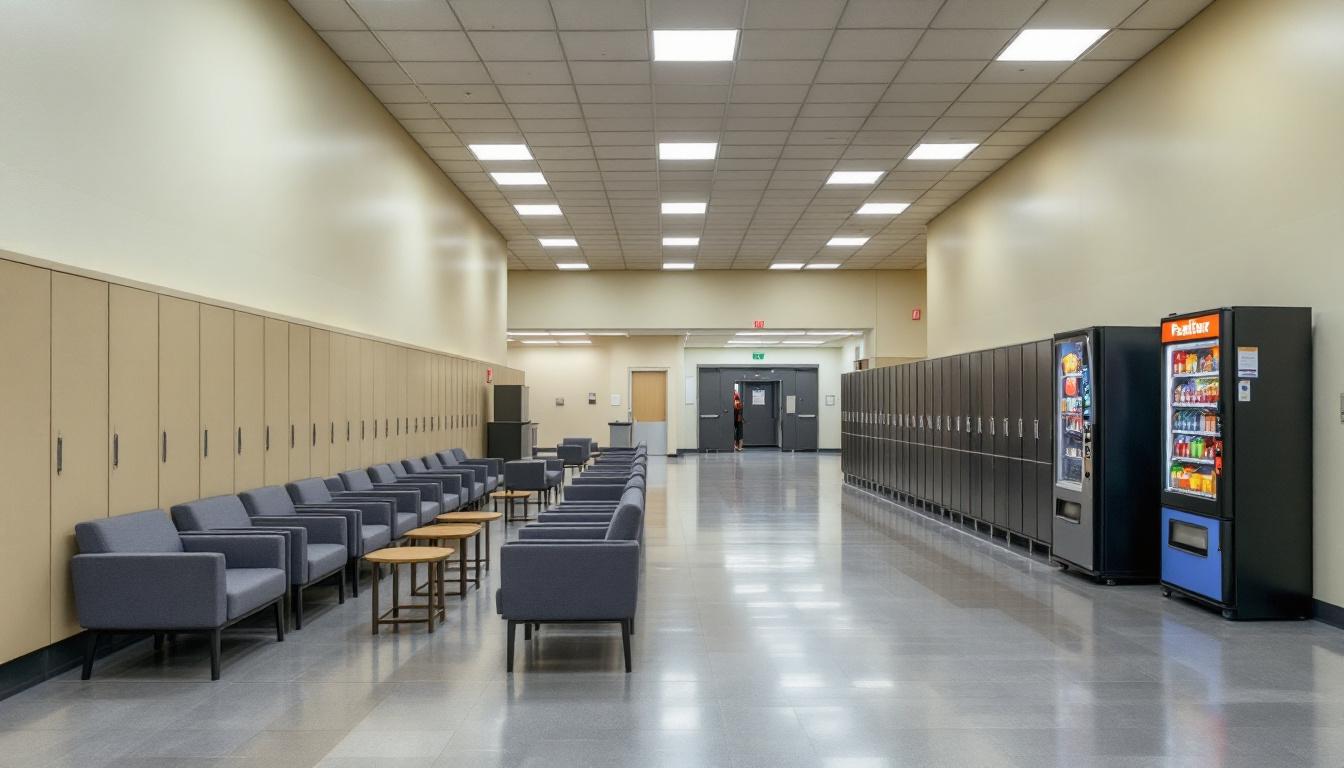
Organizational frameworks at present actively shape every aspect of life for the population, with structured schedules and clear hierarchies providing predictability throughout each day. The facility typically operates on a regimented timeline that begins with early morning count procedures, followed by work assignments, meals, and programming activities. This systematic approach generally helps maintain order while offering the population opportunities to engage in productive routines that may include educational programs, vocational training, and recreational activities.
Living accommodations usually consist of dormitory-style housing units where individuals are assigned based on various factors including security classification and program participation. The population typically shares common areas within their housing units, which often include television rooms, study spaces, and basic recreational facilities. Additionally, personal property allowances generally permit residents to maintain some personal items, while commissary services supply additional necessities and comfort items that can be purchased with funds from approved accounts.
While daily structure remains consistent, the facility often provides various programs that supply meaningful engagement opportunities for the population. Recreation and exercise activities typically include outdoor sports, fitness equipment access, and organized tournaments that help maintain physical wellness. Visitation policies generally allow regular contact with family members and approved visitors, while communication options may include monitored phone calls and correspondence. Work assignments throughout the facility usually range from food service and maintenance to administrative support roles, providing the population with valuable skills and routine responsibilities that contribute to the overall operation of the institution.
Ready to Connect?
Start communicating with your loved one today
Search for an Inmate
